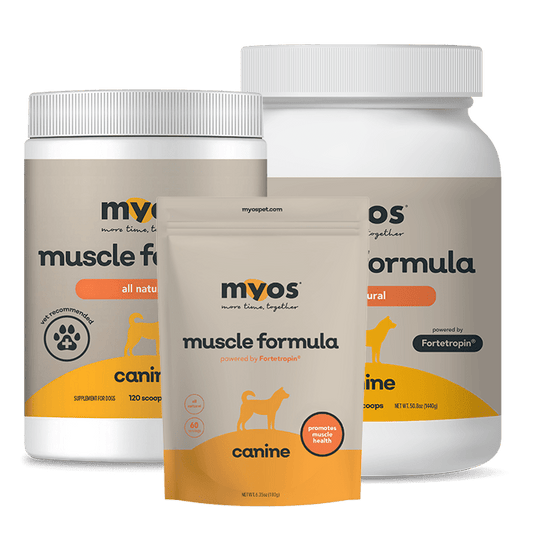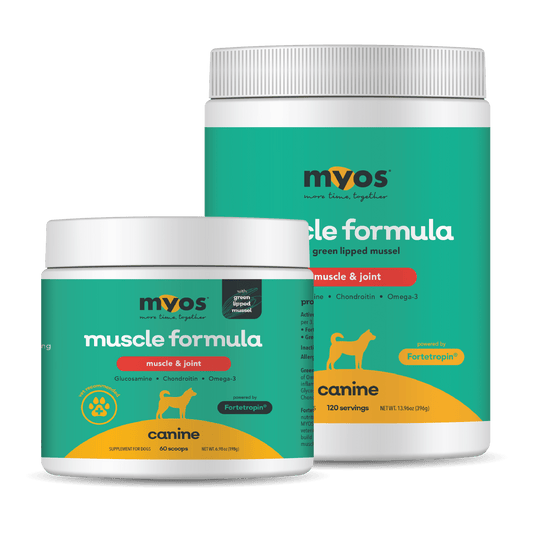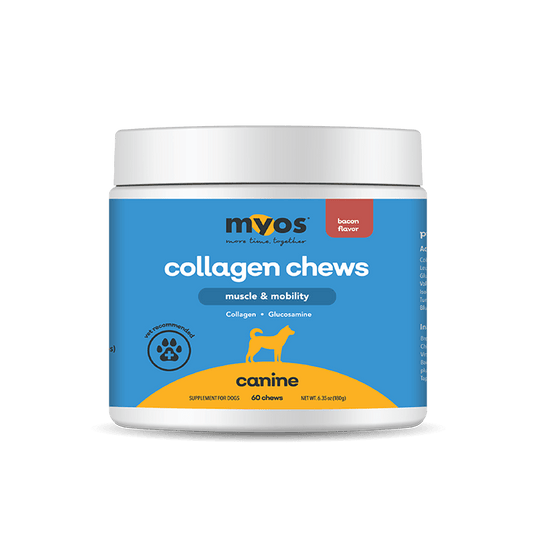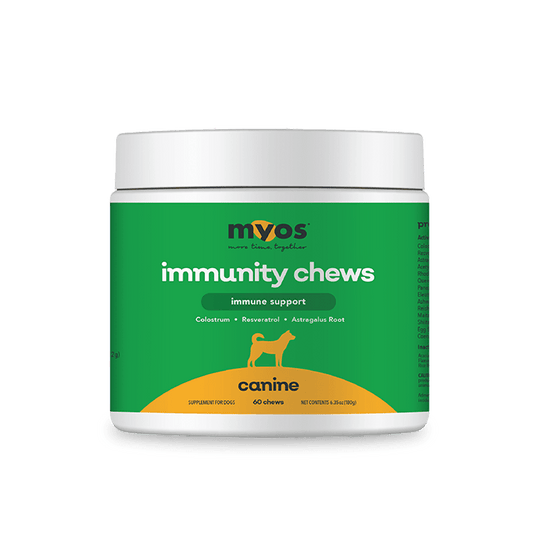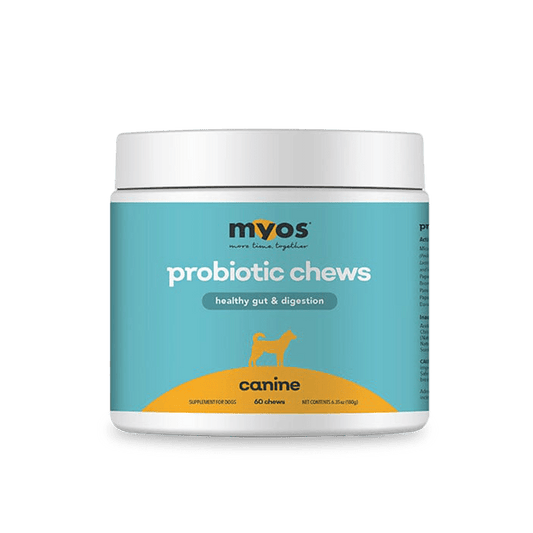Introduction
Fortetropin is an advanced nutrition product that is manufactured from fertilized, chicken egg yolk using a proprietary, low temperature process. When egg yolk is heated during the cooking process, proteins become irreversibly unfolded and lipids become oxidized. On the other hand, if egg yolk is consumed raw, then one runs the risk of being exposed to very harmful pathogens such as Lysteria monocytogenes, Staphylococcus aureus and Salmonella. The proprietary, low temperature manufacturing process that is utilized in the production of Fortetropin yields a nutrition product that is safe and free of harmful pathogens while maintaining the bioactivity of the proteins and lipids that are found to be naturally present within egg yolk. In this blog post, we will discuss the veterinary and human clinical studies related to Fortetropin® that have been completed.
The Impact of Fortetropin on Recovery Following Tibial Plateau Leveling Osteotomy (TPLO)
Veterinary researchers at Kansas State University studied the impact of Fortetropin on 100 dogs recovering from TPLO surgery. One of the most common veterinary surgical procedures in the United States, TPLO surgery is performed to repair tears of the cranial cruciate ligament (CCL). Following TPLO surgery, the operated limb must be immobilized for several weeks which typically leads to disuse muscle atrophy. In this study, a group of 50 dogs were supplemented with Fortetropin after undergoing TPLO surgery while another group of 50 dogs received supplementation with a mactronutrient-matched placebo, cheese powder.
The investigators observed that the dogs that received Fortetropin supplementation following TPLO surgery did not experience statistically significant changes in quadriceps muscle thickness in the affected (p=0.31) and unaffected limb (p=0.37). On the other hand, dogs that received a macronutrient matched placebo did experience a reduction in muscle thickness after TPLO surgery in the affected (p=0.03) and unaffected limb (p=0.02). Dogs that received Fortetropin supplementation did not experience any statistically significant changes after 8 and 12 weeks in levels of serum myostatin, a protein that “puts the brakes” on the growth and development of new muscle tissue. Dogs in the placebo group experienced an increase in myostatin levels of ~10% when serum myostatin levels were measured 8 weeks after surgery. In a separate clinical study conducted at the Animal Medical Center, New York, no impact was observed on serum levels of myostatin in dogs after 72 hours of supplementation [2]. Thus, it is clear Fortetropin needs to be consumed by dogs for more than a few days before there is some impact on serum levels of myostatin.

The veterinary researchers also measured the weight bearing capacity of the dogs at baseline (t=0) and 8 weeks following TPLO surgery using force plate analysis. When a within group statistical analysis was performed, it was clear that both the Fortetropin supplemented group improved (p<0.01) along with the placebo supplemented group (p=0.01) after 8 weeks following surgery. Once would expect that even dogs in the placebo group should experience an improvement in weight bearing capacity 8 weeks following TPLO surgery as the overall outcome for dogs undergoing TPLO surgery to repair CCL tears is very good. The magnitude of improvement in weight bearing capacity was greater in the Fortetropin supplementation group (Δ=5.74%) relative to the placebo supplementation group (Δ=3.25%). However, when a between group statistical analysis was done (Fortetropin, placebo), p=0.09 was observed. Therefore, we can conclude that there was a trend towards improved recovery based on force plate analysis in dogs that received Fortetropin supplementation relative to dogs that received cheese powder supplementation.

Figure 1: The impact of Fortetropin on thigh circumference and weight bearing capacity in dogs following TPLO surgery [1].
The Impact of Fortetropin on Quality of Life and Mobility in Geriatric Dogs
Clinical metrology instruments (CMIs) are a powerful tool in Veterinary Medicine and are used extensively in the field of canine osteoarthritis. One of the most well known CMIs that is used by veterinarians all around the world to aid in the diagnosis of canine osteoarthritis is the Liverpool Osteoarthritis in Dogs (LOAD) questionnaire [3]. Developed by veterinary researchers at the University of Liverpool, UK, the LOAD questionnaire is comprised of 13 questions that dog owners answer related to the mobility and quality of life of their dog.

Figure 2: The Liverpool Osteoarthritis in Dogs (LOAD) questionnaire [2].
In LOAD, questions 1-5 relate to the mobility of the dog while questions 6-13 relate to the behavior of the dog during exercise. Each question is scored from 0 to 4 with higher scores representing more severe canine osteoarthritis. A total LOAD score ranging from 0-10 represents ‘mild’ osteoarthritis while a score ranging from 31-52 represents ‘extreme’ osteoarthritis.
The LOAD CMI was the basis for a veterinary clinical study conducted by veterinary researchers at Kansas State University College of Veterinary Medicine [4]. 23 dogs enrolled in the clinical study received Fortetropin supplementation on a daily basis while 24 dogs enrolled in the study received a macronutrient-matched placebo on a daily basis. Dog owners completed the LOAD questionnaire at baseline and after 6 and 12 weeks of supplementation. After 6 weeks of Fortetropin supplementation, a statistically significant decrease in LOAD score (p=0.035) was observed which represents an improvement in the quality of life and mobility in the geriatric dogs in this group. On the other hand, dogs that were supplemented with a macronutrient-matched, cheese powder placebo did not experience a statistically significant change in their LOAD score after 6 weeks of supplementation (p=0.0065).
Dogs that suffer from canine osteoarthritis are commonly managed using nonsteroidal anti-inflammatory drugs (NSAIDs). Although NSAIDs are very effective in terms of managing canine osteoarthritis [4], long-term use of these drugs has been associated with kidney and liver damage. Quadriceps muscle weakness is a major risk factor for osteoarthritis [6] as the underlying muscle weakness places greater strain on the joints, leading to cartilage degradation over time. Although NSAIDs address canine osteoarthritis-related pain, they do not address the underlying muscle weakness. Combining NSAIDs with a nutritional supplement such as Fortetropin also enables the veterinarian to potentially reduce the dose of the NSAID needed to manage the dog’s osteoarthritis.
The Impact of Fortetropin on the Rate of Muscle Protein Synthesis in Older Men and Women
In order to study the potential of Fortetropin to address sarcopenia in older men and women, researchers at the University of California, Berkeley designed a randomized, double blind, placebo-controlled human clinical trial to measure the impact of Fortetropin on the rate of muscle protein synthesis (MPS) in 60-75 year old men and women [7]. 10 subjects (5 men, 5 women) were assigned to consume Fortetropin for 21 days while another group of 10 subjects (5 men, 5 women) were assigned to consume a macronutrient matched placebo, cheese powder during this time period. During the 21 day supplementation period, all of the subjects consumed Deuterium Oxide (D2O) every day to serve as a heavy water tracer. Through transamination and other intermediary pathways, deuterons from D2O become incorporated into amino acids and eventually proteins. After 21 days of supplementation, the subjects underwent a muscle microbiopsy. Protein from muscle tissue was extracted, digested with trypsin and then analyzed with high resolution mass spectrometry in order to accurately measure the deuterium content. Elevated deuterium incorporation in muscle tissue protein is directly proportional to an elevated rate of muscle protein synthesis.

Figure 3: A schematic of a randomized, double blind, placebo-controlled human clinical trial conducted at University of California, Berkeley to measure the impact of Fortetropin on the rate of muscle protein synthesis (MPS) in 60-75 year old men and women [7].
Based on the peptide fragmentation pattern that is observed for each unique tryptic peptide, it is possible to identify the protein that the peptide was derived from using protein database searching algorithms. Consumption of the D2O tracer also led to a shift in the isotope pattern for each muscle protein-derived tryptic peptide and was used to calculate the muscle protein synthetic rate for each protein along with an average overall muscle protein synthetic rate for each subject. It is clear from the figure below that the protein synthetic rate was higher for almost every muscle protein in subjects supplemented with Fortetropin as opposed to cheese powder. Overall, Fortetropin supplementation resulted in an 18% increase in the rate of muscle protein synthesis (MPS) when compared against the subjects that were supplemented with a macronutrient-matched placebo.

Figure 4: Fractional rate of synthesis for muscle proteins identified from muscle tissue obtained from microbiopsy. Reproduced from [7].
The Impact of Fortetropin on Skeletal Muscle Growth in Young, Adult Males
In a randomized, double blind, placebo-controlled, human clinical trial conducted at the University of Tampa involving 45 subjects (n=15 per group), two doses of Fortetropin (6.6 grams/day and 19.8 grams/day) were evaluated in terms of their ability to stimulate gains in muscle mass [8]. Subjects in the placebo group consumed a macronutrient-matched supplement in place of Fortetropin. The study subjects were required to complete resistance training exercises twice per week throughout the 12-week duration of the clinical study. Subjects that consumed Fortetropin on a daily basis (6.6 grams/day and 19.8 grams/day) gained 1.70 kg and 1.68 kg of muscle mass while subjects in the placebo group gained only 0.6 kg of muscle mass. Although there were no statistically significant differences observed in terms of muscle mass gains in the two groups that were supplemented with Fortetropin, it is clear that Fortetropin supplementation resulted in significant gains in muscle mass with respect to placebo supplementation.

Figure 5: The impact of Fortetropin and placebo supplementation on gains in muscle mass. Reproduced from [8].
Summary:
In veterinary clinical studies, Fortetropin has been shown to attenuate muscle loss following TPLO surgery and to enhance recovery based on weight bearing capacity measurements using force plate analysis after 8 weeks of supplementation. Geriatric dogs that were supplemented with Fortetropin experienced statistically significant decreases in LOAD scores, representing an improvement in quality of life and mobility. In geriatric humans, Fortetropin supplementation resulted in an ~18% increase in the rate of muscle protein synthesis when compared with geriatric humans that were supplemented with a macronutrient matched placebo. Young adult males that were supplemented with Fortetropin while performing resistance training exercises experienced statistically significant gains in muscle mass when compared with subjects that received a macronutrient matched placebo.
References:
- White, Dana A., et al. "Fortetropin inhibits disuse muscle atrophy in dogs after tibial plateau leveling osteotomy." Plos one15.4 (2020): e0231306.
- Nugent Britt, Carmella C., Leilani X. Alvarez, and Kenneth Lamb. "In a Randomized, Placebo-Controlled Cross-Over Study, Administration of 6 and 12 G Fortetropin® Does Not Reduce Serum Myostatin in Healthy Adult Dogs Over 72-Hours." Frontiers in Veterinary Science(2021): 783.
- Hercock, C. A., et al. "Validation of a client‐based clinical metrology instrument for the evaluation of canine elbow osteoarthritis." Journal of Small Animal Practice50.6 (2009): 266-271.
- Harkin, K. R. “Impact of Fortetropin on quality of life and mobility in geriatric dogs.” Revised Manuscript submitted, Canadian Veterinary Journal (2021).
- Innes, John F., J. Clayton, and B. Duncan X. Lascelles. "Review of the safety and efficacy of long‐term NSAID use in the treatment of canine osteoarthritis." Veterinary Record166.8 (2010): 226-230.
- Ikeda, Shinichi, Hiroshi Tsumura, and Takehiko Torisu. "Age-related quadriceps-dominant muscle atrophy and incident radiographic knee osteoarthritis." Journal of Orthopaedic Science10.2 (2005): 121-126.
- Evans, William, et al. "Effects of Fortetropin on the Rate of Muscle Protein Synthesis in Older Men and Women: A Randomized, Double-Blinded, Placebo-Controlled Study." The Journals of Gerontology: Series A76.1 (2021): 108-114.
- Sharp, Matthew H., et al. "The effects of fortetropin supplementation on body composition, strength, and power in humans and mechanism of action in a rodent model." Journal of the American College of Nutrition35.8 (2016): 679-691.

